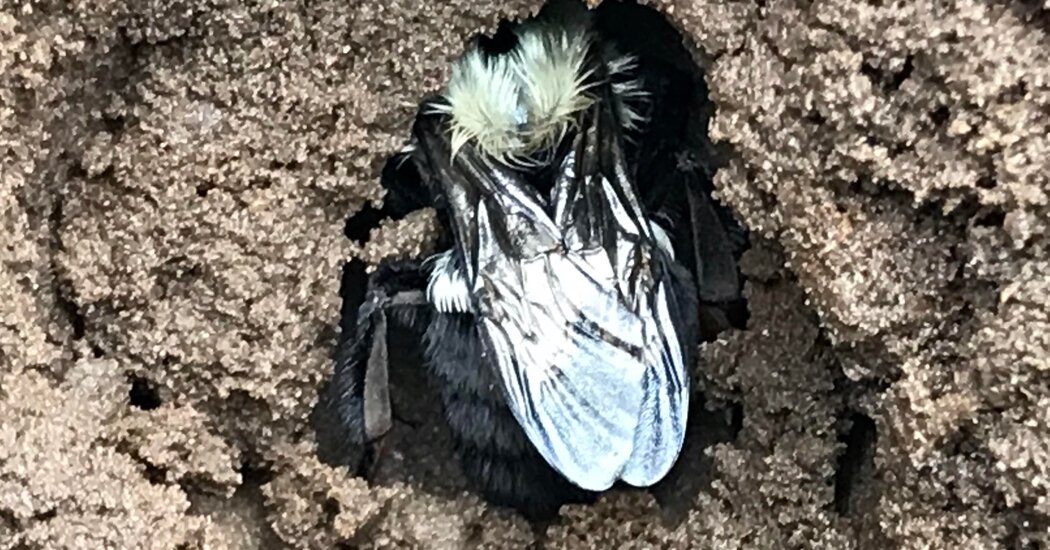In an elaborate experiment, scientists discovered that the insects chose to hibernate in soil full of pesticides and other poisons.
North-facing, sloping ground with loose, sandy soil — if you’re a bumblebee queen on the market for a winter home, these features will have you racing to make an offer. But scientists were recently stunned to find there’s something else these monarchs like in a place to hibernate: pesticides.
In a paper published last month in the journal Science of The Total Environment, researchers described an experiment that gave common eastern bumblebee queens a choice: hibernate in clean soil, or in soil laced with pesticides. The insects behaved in a way that was the opposite of what was expected.
“Queens did not avoid any of the pesticides,” said Sabrina Rondeau, an ecologist at the University of Ottawa. “Even at high concentrations they didn’t, and still seem to prefer the soil contaminated with pesticides.” The finding, Dr. Rondeau admits, was “very surprising.”
One researcher described the study’s findings as “terrifying.”
“It wasn’t just one pesticide at one concentration, it was across the board,” said S. Hollis Woodard, a bee biologist at the University of California, Riverside. That’s scary, she said, because our soils are full of pesticides — many that traveled far from where they were originally used. Gravitating toward these pesticides may put queens at high risk for direct exposure, with potentially damaging consequences.
Most of the roughly 250 species of bumblebee have annual life cycles, where queens start new colonies in the spring that grow throughout the summer before collectively dying out in the fall. As winter nears, queens that have mated then burrow into the soil to sleep through the cold before restarting the cycle.
This period of solitude is poorly understood.
“There’s a huge bias in bumblebee research” that favors the social stage of a humming bumblebee colony, Dr. Woodard said. But “for much of the year, queens are living their own little solitary lives.”
